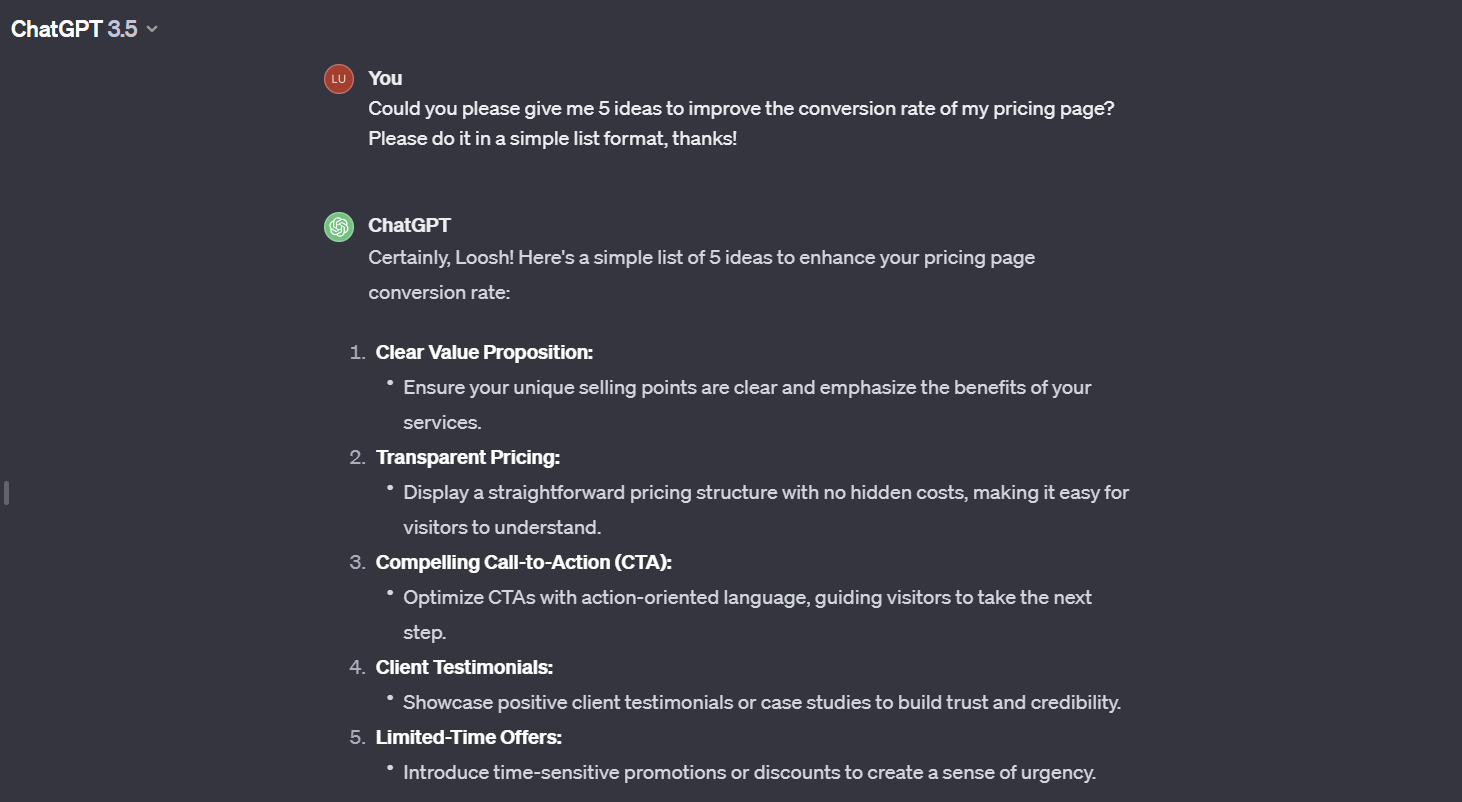
AI: Good or Bad in Web Development?
Post Contents
If I had a pound for every time I was asked what I thought about AI in web development, I’d have, like, 22 quid. And I get it. Artificial intelligence is a massive topic right now, and it’s only natural for people to want to hear opinions from those closest to it – like us web developers.
But here’s the thing – I don’t think it’s a binary question. There are good points and bad points. Let me show you what I mean…
The ‘good’ side
Here are a few reasons why I think AI in web development can be very promising…
Idea generation
They say that everything on the internet looks the same. And there’s a definite truth to this. Part of it is because we’ve figured out what works, and we’re running with it. And part of it is because, well, it can be hard to come up with fresh ideas. AI takes all that existing data and uses it to offer up new combinations and insights.
When you’re stumped for ideas for design, content, or coding, AI is able to identify patterns that might take you an hour to come up with. By analysing site purpose, target audience, and more, it’s able to generate suggestions tailored to each individual site, without the dreaded blank page syndrome. More ideas, faster.

Useful features
Out of all the things AI can do for web development, I think AI chatbots are probably one of the best. When we think of chatbots, we usually think of the early generation ones which were pretty useless. Now, they’re incredible. I don’t want to say they ‘understand’. They don’t. But they don’t have to. Even without understanding, they’re still able to converse and relay relevant information that enhances the user experience and saves people time – all without having to pay human agents to work 24 hours a day, 7 days a week.
Efficiency
Web development takes time. We don’t like it. You don’t like it. But AI is giving us a sneak peek of a future where sites can be launched quicker than ever before. How?
Design-wise there are useful AI tools to generate sitemaps and wireframes for websites, meaning I can start the visual design sooner, which is the exciting part.
Development-wise, by automating some of the more time-consuming processes. When used correctly, some AI tools can do things like autocomplete code, quickly detect bugs, suggest fixes, summarise lines of code, and so on. My life is definitely easier in this sense thanks to AI, and I know clients appreciate it if I’m able to deliver ahead of schedule.
Improved imagery
I’m not talking about AI-generated images here. Let’s be honest – they usually look weird, don’t they? They’re very distinctive, and visitors will spot them a mile away as soon as they see the person with 7 fingers.
No, instead I’m talking about AI’s ability to make images more impressive. From removing unwanted elements to getting rid of background ‘noise’ and sharpening the picture, AI can take a pretty simple image and make it a centrepiece; something that will catch the eye of the visitor, and hold it.
The ‘bad’ side
So let’s take a look at the other side of the equation…
‘Useful’ features
Wait, didn’t I say this was a good thing? I did. The problem is that I’ve seen a lot of useful AI features end up being not that useful at all. Take chatbots, the example I used above. On paper, they’re great. But their impact all depends on how they’re used. Too many people are simply embedding chatbots and putting a big ‘tick’ on the to-do list.
That’s not how it works. I've seen a lot of websites using chatbots which start off by being annoying with popups and messaging ping noises, then after sending them a couple of messages all they know how to do is direct you to the contact page. That's not useful. That's a waste of time and adds unnecessary bloat to your website's code for zero gain.
These features need to be set up properly – and trained on your own data – if they’re going to do what you want them to do.
Lack of trust
Would you ask Chat GPT to write a letter to your clients/customers and send it without checking it first?
How about would you trust AI code, straight out of the box? No? Me neither.
I suppose it’s a bit like bringing in an intern into a web development agency. You want to give them the freedom to do their thing and show off their skills. But at the same time, there’s zero chance anything is being sent to the client without that code being double- and triple-checked by more experienced devs. This lack of trust means we still need developers to look at AI code, understand it, and verify it.
Time sinks
AI should save us time. And it can. Unfortunately, in some cases it can also open up massive time-sinkholes. Probably the biggest example of this is when AI produces questionable layouts, or really poor quality results in general. We've all been there where we've been asking Chat GPT the variations of the same thing over and over again because it's either wording things like an over-enthusiastic robot or producing something pretty far off from what you intended. Or as I mentioned before, AI-generated imagery creating unsettling results...

Equally, I've seen a lot of AI-generated website pages. Whether they were done on Midjourney (which can be good for ideation), or using an AI website builder to generate complete layouts, I've seen a lot of examples that look either generic or nonsensical.
It’s not just a case of starting over; you’ll likely get the same results. Instead, it turns into a rescue mission to fix or ‘undo’ everything that the AI did wrong. And yes, this can very realistically turn out to be more time-consuming than just doing it yourself from scratch!
It’s AI
Let’s not forget what those two innocuous-sounding letters stand for. At the end of the day, AI is still AI. It’s still artificial. Fake. Not real. No matter how smart it seems, it’s no match for the human brain. It can’t compete with human creativity. It can’t do what people do. It can’t ‘understand’ your business. And when you look at it like that, how much can you really rely on it to know what should/shouldn’t be included on your site?
Even when it does know, you need to know the right things to ask it. The potential for missed opportunities is huge, especially when it comes to website strategy, conversion rate optimisation and user understanding.
My two cents
Is AI in web development exciting? You bet. Is it a threat to web designers or developers? I don’t think so. As with all new technology, we get given all these new and exciting abilities, but they have to be used in the right way and a thought-out way. Simply including it in your site or using it in your workflow to tick a box or because everyone else is doing it isn't the answer.
The most likely scenario I see coming from this is that we work together, us devs and our AI colleagues, to create great things.
AI alone won’t cut it on its own. And while developers can work alone, I think we’ll be able to do even more when we’ve got an extra helpful artificial brain supporting us along the way, and I do believe that those who refuse to adopt these new tools will be holding themselves back.
Basically, I'm here to send a message from the robots - join 'em or die.
So… what do YOU think? Follow me on LinkedIn to join the conversation and for more content like this!
- Article categories:
- Web development



